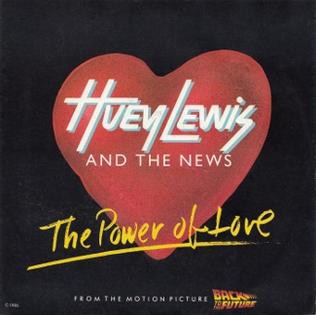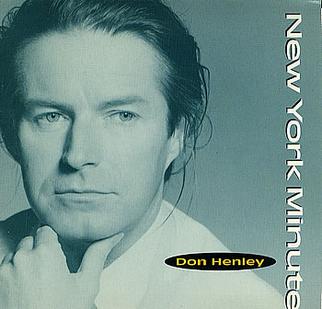 “Nothin’ But A Good Time” by Poison stands as one of the definitive anthems of the 1980s glam metal scene, encapsulating the hedonistic spirit, rebellious energy, and infectious party vibe that defined an era. Released in 1988 as the lead single from their second album Open Up and Say… Ahh!, the song quickly became Poison’s signature track, a high-energy call to live life loud and carefree. It perfectly captures the ethos of a generation eager to escape the pressures of everyday life through rock ’n’ roll excess, and it remains a staple of classic rock radio and 1980s nostalgia to this day.
“Nothin’ But A Good Time” by Poison stands as one of the definitive anthems of the 1980s glam metal scene, encapsulating the hedonistic spirit, rebellious energy, and infectious party vibe that defined an era. Released in 1988 as the lead single from their second album Open Up and Say… Ahh!, the song quickly became Poison’s signature track, a high-energy call to live life loud and carefree. It perfectly captures the ethos of a generation eager to escape the pressures of everyday life through rock ’n’ roll excess, and it remains a staple of classic rock radio and 1980s nostalgia to this day.
Poison, formed in 1983 in Pennsylvania, rose to prominence during a time when glam metal—also known as hair metal—dominated the charts and airwaves. Characterized by flashy looks, big hair, and catchy, anthemic tunes, glam metal was as much about the spectacle and attitude as it was about the music. Poison quickly emerged as one of the scene’s most popular bands, thanks in large part to their charismatic frontman Bret Michaels, infectious hooks, and party-ready anthems like “Nothin’ But A Good Time.”
Musically, “Nothin’ But A Good Time” is an exuberant blend of driving guitar riffs, pounding drums, and melodic vocals. The song kicks off with a crunchy, energetic guitar riff by guitarist C.C. DeVille that immediately sets the tone for a fun, no-holds-barred rock anthem. The rhythm section, featuring Bobby Dall on bass and Rikki Rockett on drums, lays down a tight, upbeat groove that propels the song forward with relentless momentum. This instrumental foundation perfectly supports Bret Michaels’ vocal delivery—powerful, enthusiastic, and imbued with a sense of joyful rebellion.
The song’s structure follows a classic glam metal formula, featuring a catchy verse-chorus pattern that builds to a memorable, sing-along chorus. The chorus itself is a jubilant proclamation: “Cause we’re nothing but a good time,” repeated with such enthusiasm that it invites the listener to join in the celebration. The chorus serves as both a statement of intent and an invitation to shed worries, kick back, and embrace the night.
Lyrically, “Nothin’ But A Good Time” is an unabashed celebration of fun and freedom. It’s a response to the pressures of daily life, work, and societal expectations—a rallying cry to break free from stress and responsibilities. The song’s narrative centers on the frustration of dealing with a monotonous or oppressive job, only to find salvation and joy in the world of rock ’n’ roll parties and good times with friends. Lines like “When I woke up late for school, man, I didn’t wanna go / Shot my daddy right out of bed, then I ran downstairs and I loaded up the stereo” set the tone with rebellious humor and youthful defiance.
The lyrics also express a desire to live in the moment, rejecting negativity in favor of fun and positivity. This attitude resonated strongly with young listeners during the late 1980s, a period marked by economic uncertainty, cultural shifts, and a yearning for escapism. “Nothin’ But A Good Time” became a soundtrack for those seeking release from everyday pressures through music, dancing, and partying.
The song’s music video further cemented its status as a glam metal classic. Featuring the band performing amid a colorful party atmosphere, the video captures the playful, energetic vibe of the song. It showcases Poison’s signature style—big hair, leather, makeup, and flamboyant stage presence—while highlighting the communal joy of rocking out and having a good time. The video received heavy rotation on MTV, a critical factor in boosting the song’s popularity and reach.
“Nothin’ But A Good Time” was produced by Tom Werman, a veteran producer known for his work with other major rock acts of the era like Mötley Crüe and Cheap Trick. Werman’s production style emphasized clarity, punch, and radio-friendly dynamics, all of which are evident in the polished yet raw sound of the track. The production balances the band’s gritty energy with commercial appeal, making the song accessible to both rock purists and mainstream audiences.
The track’s commercial success was significant. It peaked at number six on the Billboard Hot 100 chart and became one of Poison’s biggest hits. Its popularity helped drive Open Up and Say… Ahh! to multi-platinum status, solidifying Poison’s position among the top acts of the glam metal movement. The song also enjoyed international success, contributing to the global spread of the hair metal phenomenon.
Beyond its commercial achievements, “Nothin’ But A Good Time” holds cultural significance as an anthem of the 1980s rock lifestyle. It encapsulates the era’s themes of rebellion, excess, and youthful exuberance. The song’s message of carefree enjoyment and escapism continues to resonate, serving as a reminder of a time when rock music was as much about fun and spectacle as it was about musicianship.
Poison’s chemistry as a band shines through in this track. Bret Michaels’ charismatic vocals, C.C. DeVille’s fiery guitar work, Bobby Dall’s solid bass lines, and Rikki Rockett’s energetic drumming combine to create a vibrant and engaging performance. Each member’s contribution is essential to the song’s infectious energy, and their on-stage camaraderie helped make “Nothin’ But A Good Time” a live show highlight.
The song’s enduring appeal is also evident in its continued presence in popular culture. It has been featured in numerous films, television shows, commercials, and video games, often used to evoke the carefree spirit of the 1980s or to inject scenes with energy and fun. Its recognizable riff and chorus have become shorthand for good times and rock ’n’ roll attitude, ensuring its place in the cultural lexicon.
Musically, “Nothin’ But A Good Time” exemplifies the hallmark characteristics of glam metal: catchy melodies, memorable hooks, and a blend of hard rock edge with pop sensibility. The guitar solo by C.C. DeVille is a highlight, featuring flashy, technically impressive playing that adds excitement and flair without overshadowing the song’s overall feel. The solo’s balance of speed and melody exemplifies the genre’s emphasis on showmanship and musicianship.
The song also reflects Poison’s ability to craft accessible rock songs that appeal to a broad audience. Its themes of fun and rebellion are universal, while its polished production and memorable hooks make it radio-friendly. This combination helped the band bridge the gap between rock fans and mainstream listeners, contributing to their commercial success.
The track’s lyrics, while straightforward, carry a deeper resonance for listeners who have experienced the pressures of work, relationships, or societal expectations. “Nothin’ But A Good Time” offers a temporary escape, a reminder that life isn’t only about responsibilities but also about moments of joy and freedom. This message has kept the song relevant, as audiences continue to seek music that uplifts and energizes.
Poison’s image and persona were closely tied to this song. Known for their flashy clothes, teased hair, and larger-than-life personalities, the band embodied the glam metal lifestyle that “Nothin’ But A Good Time” celebrates. Their rebellious yet fun-loving image appealed to fans eager for music that combined attitude with accessibility.
The song’s success also marked a peak in Poison’s career. It was a key part of their rise to stardom and helped define their musical identity. “Nothin’ But A Good Time” became a staple of their live performances and a fan favorite, often eliciting enthusiastic sing-alongs and energetic crowd participation.
Over the years, the song has been covered, parodied, and referenced by numerous artists and media outlets, further cementing its place in rock history. Its legacy as a quintessential glam metal anthem is secure, representing the era’s spirit and the enduring appeal of rock music as a source of fun and liberation.
The impact of “Nothin’ But A Good Time” extends beyond just music. It embodies a cultural moment where rock ’n’ roll provided an outlet for youth to express individuality, defy norms, and celebrate life’s pleasures. The song’s upbeat tempo, catchy melody, and positive lyrics make it a perennial favorite at parties, sporting events, and celebrations.
Critically, the song has been praised for its infectious energy and ability to capture the essence of glam metal without succumbing to clichés. While some critics have dismissed glam metal as superficial, tracks like “Nothin’ But A Good Time” demonstrate the genre’s capacity for genuine joy, musicianship, and connection with audiences.
The song’s production, performance, and reception illustrate how glam metal reached a zenith in the late 1980s. Poison, alongside contemporaries like Mötley Crüe, Def Leppard, and Bon Jovi, helped popularize a style of rock that combined theatricality with anthemic songwriting. “Nothin’ But A Good Time” stands as a shining example of this approach, balancing commercial appeal with rock authenticity.
Analyzing the song’s legacy today, it remains a touchstone for fans of 1980s rock and glam metal. Its presence on classic rock radio, streaming platforms, and compilation albums keeps it accessible to new audiences discovering the genre. The song’s universal themes and upbeat nature continue to resonate, making it a timeless party anthem.
The lasting influence of “Nothin’ But A Good Time” can also be seen in its role in shaping the expectations and aesthetics of rock music videos. The colorful, high-energy video set a template for how glam metal bands presented themselves visually—combining performance footage with party scenes and stylized imagery. This approach helped cement the genre’s visual identity and contributed to the rise of MTV as a cultural force.
Bret Michaels’ persona as the charismatic frontman is central to the song’s appeal. His distinctive voice, confident delivery, and playful attitude make “Nothin’ But A Good Time” feel like an invitation rather than just a song. Michaels embodies the spirit of fun and rebellion that the track champions, connecting with fans on a personal and energetic level.
The song also reflects the broader cultural context of the late 1980s, a time marked by economic optimism, consumerism, and a vibrant youth culture. “Nothin’ But A Good Time” captures the exuberance of this moment, providing a soundtrack to parties, clubs, and celebrations. Its joyful defiance offers a release valve for societal pressures and a celebration of youth and freedom.
In live settings, the song is often a highlight, energizing crowds and encouraging participation. Its simple, memorable chorus and upbeat rhythm make it easy for audiences to engage, fostering a sense of community and shared experience. This dynamic has helped the song maintain its popularity decades after its release.
The song’s influence on subsequent generations of musicians is also notable. Many artists cite Poison and “Nothin’ But A Good Time” as inspirations for their own approaches to songwriting, performance, and image. The song’s emphasis on fun, catchy hooks, and stage presence remains relevant, influencing genres beyond glam metal.
In conclusion, “Nothin’ But A Good Time” by Poison is more than just a rock song—it is an emblem of an era, a celebration of life, and an enduring anthem of fun and rebellion. Its infectious energy, memorable riffs, and positive message have made it a timeless classic that continues to inspire and entertain. Poison captured the essence of the 1980s glam metal scene with this track, creating a legacy that lives on in rock history and popular culture.
Whether blasting from car stereos, energizing concert crowds, or featured in movies and commercials, “Nothin’ But A Good Time” remains a joyful reminder of rock music’s power to uplift and unite. It invites listeners to let go of their worries, embrace the moment, and, above all, have a good time.


